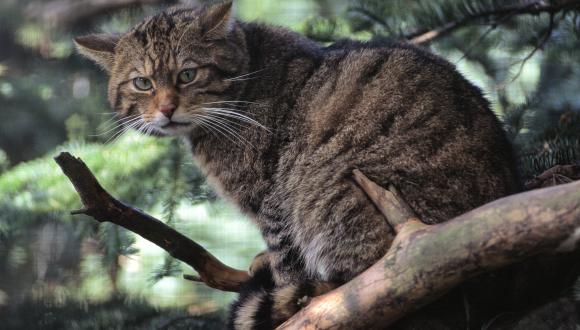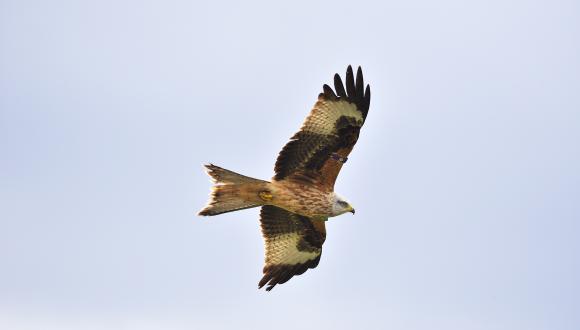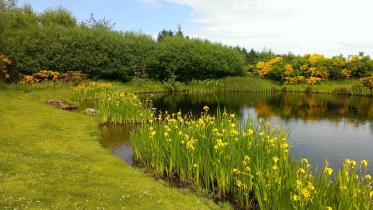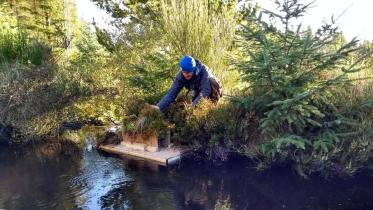Guidance - Licensing - Licence for social economic or environmental purposes in respect of Protected Species - Wildlife and Countryside Act 1981
Protected Species Licensing - Interpreting Section 16(3)(i) and (3A) of the Wildlife and Countryside Act 1981 (as amended) - Licences for ‘social, economic or environmental purposes’
Note: Only a summary of the law is quoted in this paper. Please refer to the legislation for detailed study of the various offences, their defences and exceptions etc.
Introduction
Under section 16(3) of the WCA 1981 (as amended) certain activities which would normally constitute an offence can be carried out legally under a licence. Licences can only be issued for specific purposes defined in the Act. The purposes are listed in Annex I.
For certain non-bird protected species (listed on Schedules 5, 5A, 6, 6A & 8 of the WCA), the Wildlife and Natural Environment (Scotland) Act 2011 (WANE Act) has added a new licensing purpose to the WCA at section 16(3)(i)): ‘for any other social, economic or environmental purpose’. Note this purpose also applies to any animal in relation to the snaring provisions (sections 11(1), 3C(a) & 11C).
This new purpose is qualified by two constraints. As the licensing authority, NatureScot can only grant a licence under this purpose if we are satisfied:
- that undertaking the conduct authorised by the licence will give rise to, or contribute towards the achievement of, a significant social, economic or environmental benefit; and
- that there is no other satisfactory solution. (Section 16(3A) WCA 1981 (as inserted by section 18(2)(b) of the WANE act)).
The assessment of what would constitute a social, economic or environmental purpose is generally understood. However, there is a need to outline our understanding of the two subsequent criteria (a) and (b) above for clarity and consistency reasons. This paper sets out our understanding of this new purpose, and how the conservation impacts of licences will be considered in the assessment process. This will inform how we will assess licence applications and the type of information we would expect applicants to provide.
Interpretation of the new purpose
Proposals that would give rise to, or contribute towards the achievement of, a significant social, economic or environmental benefit.
In making this assessment, it is useful to consider the ‘first test’ that is applied to consideration of licences affecting European Protected Species, and specifically the licensing purpose relating to ‘imperative reasons of overriding public interest’ (IROPI). This test is relatively well documented in European Guidance, and discussed in more detail here - European protected species licensing - Test 1 - Licensable purpose. However, in summary, the following objectives are key to the assessment of IROPI:
- to address a serious risk to human health and public safety;
- be necessary in the interests of national security and defence;
- be undertaken where there is clear and demonstrable direct environmental benefit on a national or international scale;
- be undertaken where it is shown that there is a vital contribution to strategic economic development or regeneration;
- where failure to proceed would have unacceptable social and/or economic consequences;
- where the project is of national importance or, possibly, regional importance.
The IROPI test can be taken to be more stringent than for this new licensing purpose (for instance the absence of the terms ‘imperative’, and ‘overriding public interest’). Therefore, in order to pass the new licensing purpose we can conclude that a proposed activity would not have to result or give rise to benefits of the magnitude that meet the IROPI objectives. However, the proposed benefits would still have to be significant. This is taken to mean that the activity proposed will achieve, or contribute towards, a social, economic or environmental benefit of some note. In other words the benefits must not be minor, and should concern projects of recognised importance.
This benefit would have a public interest and might relate to society (e.g. new social housing), economics (e.g. a road upgrade) or the environment (e.g. a new renewables scheme). The benefit might be felt only locally or could have wider ramifications (at the regional or national level for example).
No other satisfactory solution
In addition to ensuring that the proposal has the significant benefits described above, in assessing any licence application we would need to ensure that there was no other satisfactory solution (to the granting of a licence). The assessment of this and similar criteria is common to a number of different licence types and guidance is available European protected species licensing - Test 2 - No satisfactory purpose.
Consideration of conservation impacts
There is no statutory requirement under this licensing purpose to consider the impact of the proposed activity on the conservation status of the species in question. However, in line with decisions made in other areas of species licensing, to facilitate consistent decision making ensuring that NatureScot furthers the conservation of biodiversity (as per section 1 of the Nature Conservation (Scotland) Act 2004) and, to take forward the inherent principle of Part 1 of the Act (species protection), it is logical to make such an assessment a formal part of the licensing procedure.
Therefore, for a licence to be granted under this new purpose, NatureScot will have regard to the conservation status of the species concerned, where appropriate. We would also generally expect that licensed proposals would adopt appropriate mitigation or compensation measures, and adhere to best practice principles.
What type of information would we require from a licence applicant?
It is the responsibility of the applicant to demonstrate that the licence (and the action which it authorises) meets these licensing tests.
Licences can be subject to conditions and we are likely to require adequate mitigation and/or compensation proposals to accompany the licence application, where appropriate.
Hypothetical examples
Licence applications will be considered on their own merits and on a case-by-case basis, but the following scenarios might ‘give rise to, or contribute towards the achievement of a significant social, economic or environmental benefit’:
Examples of ‘significant social benefit’ might include:
- A private company intend to build social housing scheme in accordance with the Local Authority’s Local Plan
- A Local Authority planning to construct a bridge and access network as part of a Core Path Plan.
Examples of ‘significant economic benefit’ might include:
- A privately owned timber company want to clear-fell a woodland site in accordance with an agreed forest plan
- A local road upgrade
Examples of ‘significant environmental benefit’ might include:
- A new marine renewables scheme to reduce Scotland’s carbon footprint
- A community scale wind farm
- The creation of a Sustainable Urban Drainage Scheme to address an identified pollution problem
NatureScot - July 2011
Annex 1
Under section 16(3) of the WCA 1981 (as amended in Scotland by the WANE Act and other legislation), the following sections do not apply to anything done under and in accordance with the terms of a licence issued for certain specified purposes (reasons). Thus for those animals protected under the aforementioned sections, actions that would normally be illegal may be carried out legally under licence. Note there are several other defences (and exceptions) to the offences at Section 9 which are not described in this paper. Refer to the legislation for details.
- 9(1) Intentional or reckless killing, injuring or taking of a wild animal listed on Schedule 5.
- 9(2) Possession or control of live or dead wild animal listed on Schedule 5, or any part or derivative.
- 9(4) Intentional or reckless damage, destruction or obstruction of access to any structure or place used by a wild Schedule 5 animal for shelter or protection, or disturbance of such an animal whilst it’s occupying such sites for shelter or protection.
- 9(4A) Intentional or reckless damage, destruction or obstruction of access to any structure or place used by a wild Schedule 5 animal for shelter or protection, or disturbance of such an animal whilst it’s occupying such sites for shelter or protection.
- 10A(1) Intentional or reckless killing, injuring or taking of wild animal listed on Schedule 5A in the close season (brown hares).
- 11(1) Doing or knowingly causing or permitting to be done any of the following: positioning/using self-locking snares or other snare type specified in a Ministerial order, does this to cause unnecessary suffering to any animal; uses a bow or cross-bow, explosive except ammunition for a firearm to kill or take any animal; using a live mammal or bird or other thing as a decoy to kill or take any wild animal.
- 11(2) Doing or knowingly causing or permitting to be done any of the following to a wild animal on Schedule 6: positioning or using any trap, snare, electrical device for killing, taking or stunning, or poisonous substance or any net. Kills or takes using any automatic or semi-automatic weapon, night shooting devices, gas or smoke, decoys including sound recordings or uses mechanically propelled vehicles to chase these animals to drive, kill or take them.
- 11(3C)(a) Anyone in possession of a snare (self-locking or other specified by Ministers) without reasonable excuse.
- 11C Anyone without reasonable excuse in possession of a snare or sets in position a snare without the permission of the landowner/occupier.
- 11G(1) Intentional or reckless killing, injuring or taking of a wild animal listed on Schedule 6A (which lists those animals not to be poached (hares & rabbit)).
- 13(1) Intentional or reckless picking, uprooting or destruction of wild plants on Schedule 8, or their seeds or spores; unauthorised intentional or reckless uprooting of any other wild plant.
Published: 2021
Contact
If you already have a licence number, include it in the subject line of your email, or have it to hand when you call.






